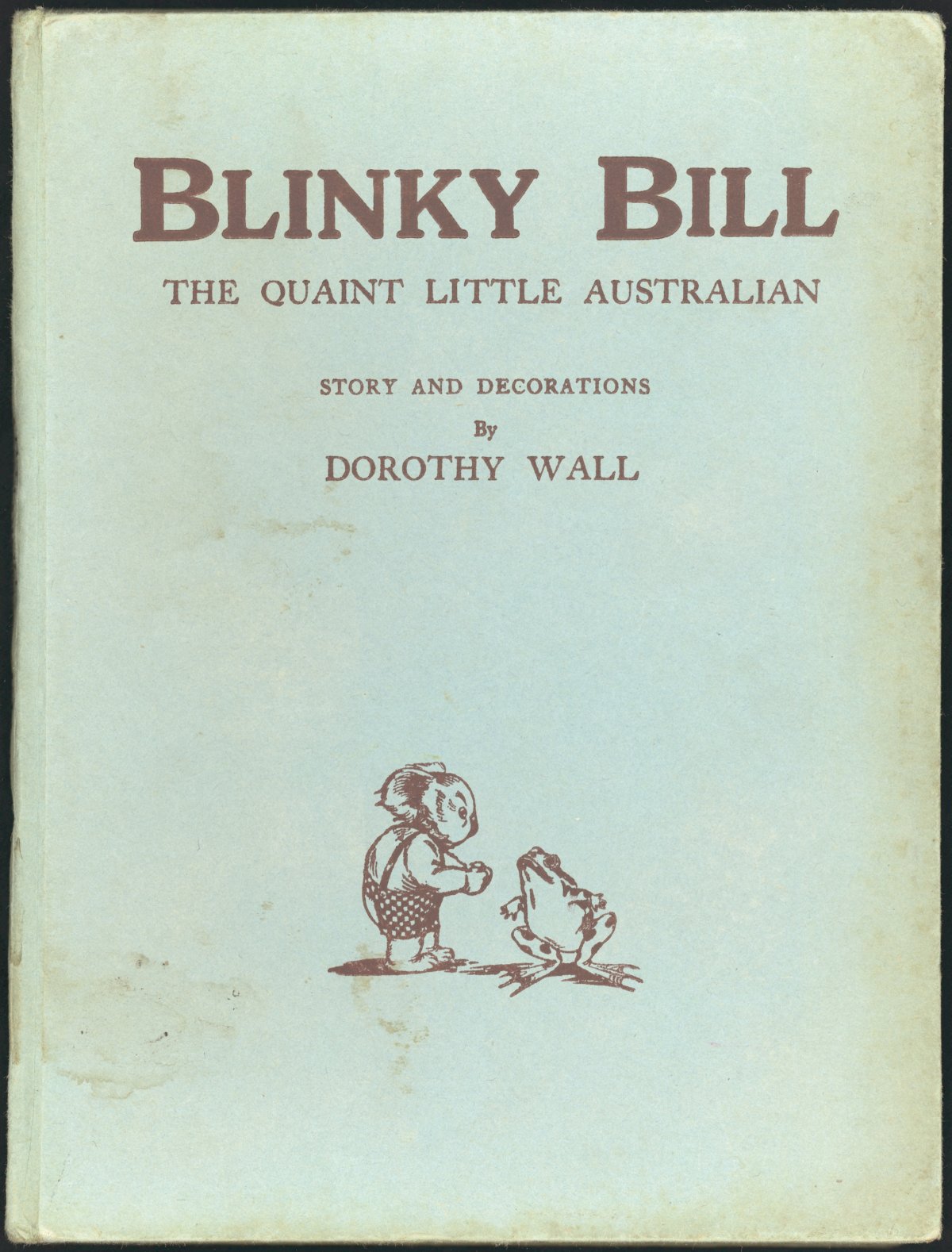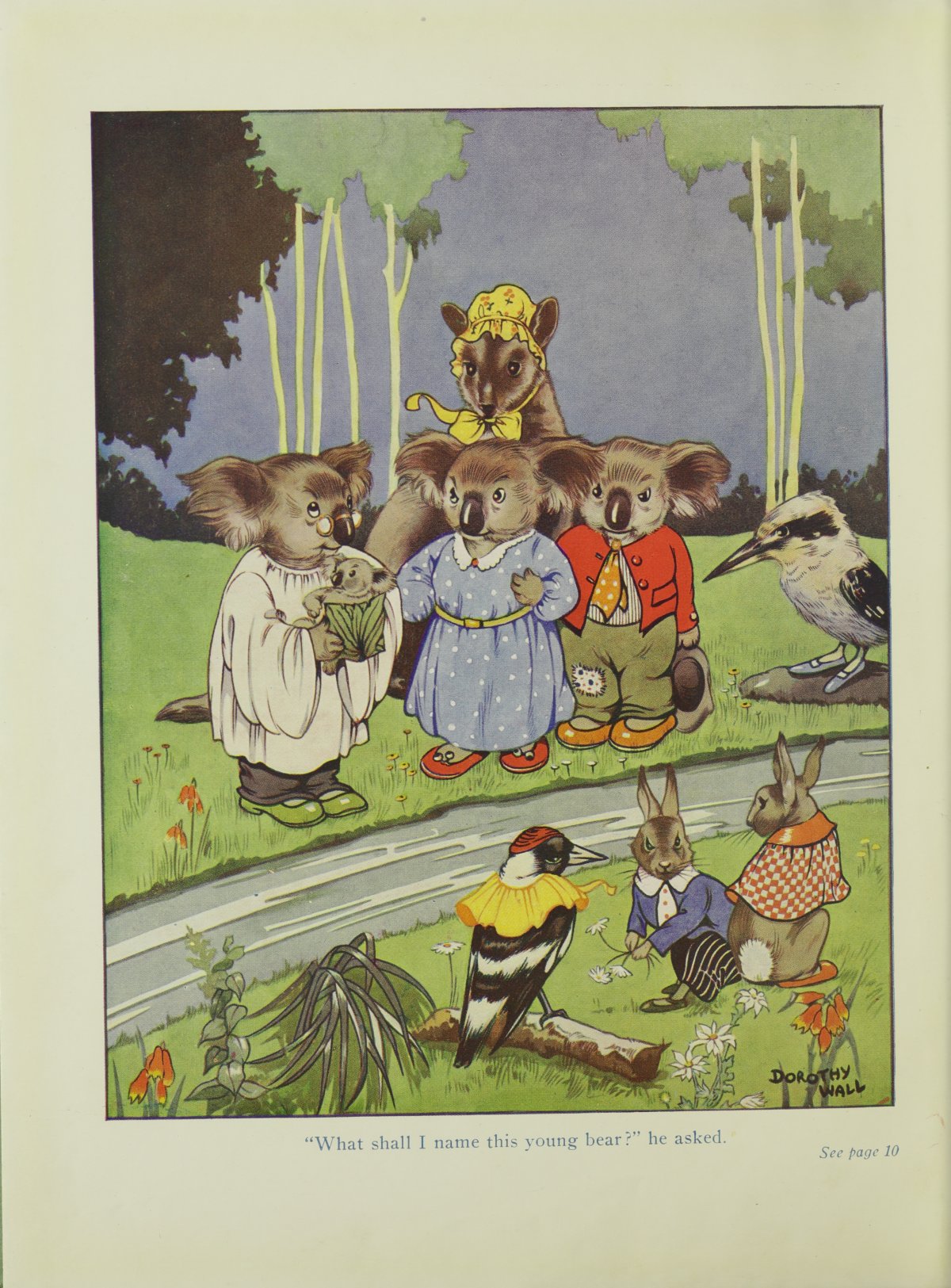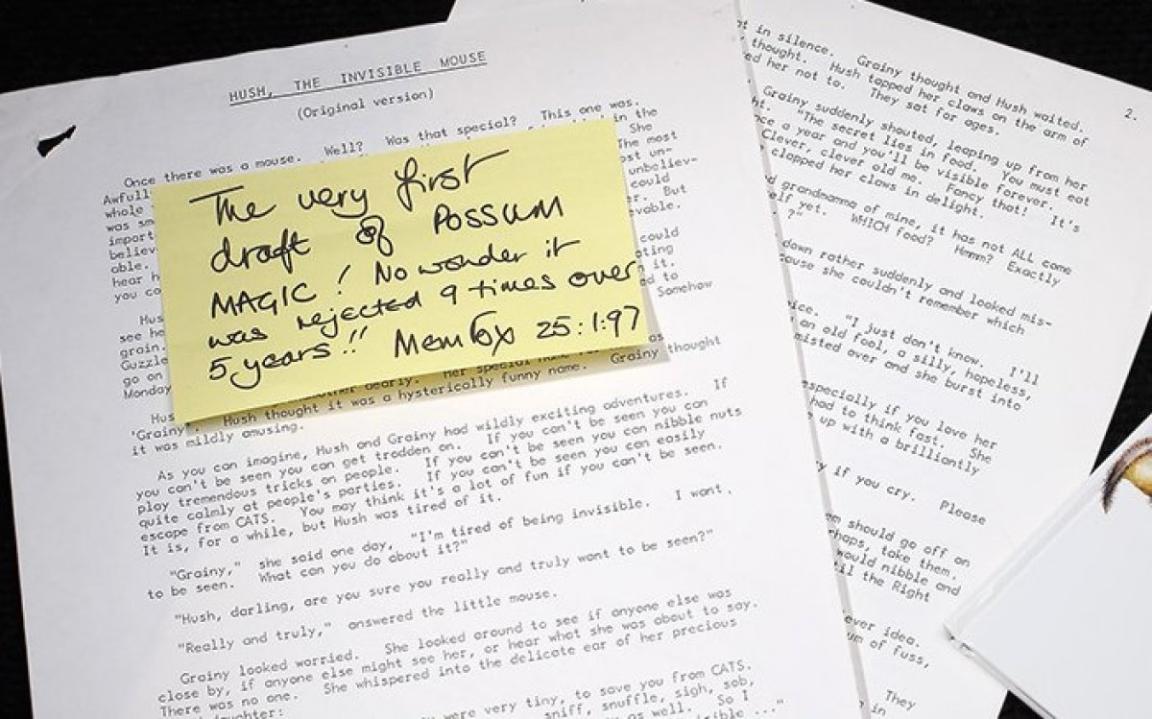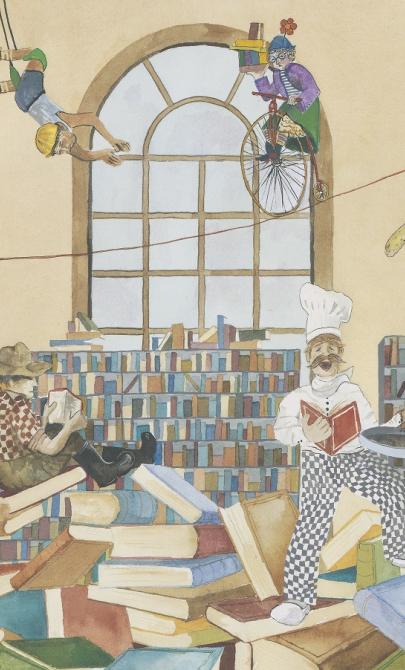Symbols in children's literature
About Blinky Bill
This cover is from the publisher's presentation copy of Dorothy Wall’s (1894─1942), children’s story Blinky Bill: The Quaint Little Australian.

Dorothy Wall, Blinky Bill: The Quaint Little Australian, 1933, http://nla.gov.au/nla.obj-943876
The copy, originally given to Wall and now held at the National Library, is the first copy of the first edition. The Blinky Bill series, written and illustrated by Wall, tells of the adventures of Blinky and his friends—Nutsy, Splodge, Flap and Marcia. Wall’s son, Peter Badgery, provided the inspiration for the cheeky little koala and the book is dedicated to him and ‘all kind children’.
First published in 1933, Blinky Bill became popular with parents wanting to develop ‘Australian’ values in their children during a period of growing nationalism. Since 1933, Blinky Bill has never been out of print in Australia.
Activity 1: Interpret
Display the front cover of Blinky Bill: The Quaint Little Australian and discuss the following questions with your students:
- What sort of animal is Blinky Bill?
- Why do you think the author used an animal as the central character?
- Why do you think she chose a koala?
- What does ‘quaint’ mean?
- What audience do you think this book was written for?
Background
Watch the video as a class to learn more about the background of the first printed copy of Blinky Bill.
Activity 2: Read the story
You may also like to link to the first copy of the first edition of Blinky Bill: The Quaint Little Australian and read the story with your students.
Animals and symbols

Dorothy Wall, Blinky Bill: The Quaint Little Australian, 1933, nla.gov.au/nla.obj-943876
When Wall moved to Sydney from New Zealand in 1914, May Gibbs (1877‒1969) was enjoying success with her story The Complete Adventures of Snugglepot and Cuddlepie.
Gibbs’ success influenced Wall to draw bush creatures in her own style.
Activity 3: Identify
Show students the second picture from the book and invite them to identify all the animals and birds that are portrayed.
Activity 4: List
Koalas are often considered a symbol of Australia. As a class, develop a list of other things that are Australian symbols. This list can include living things (e.g. kookaburras) and non-living things (e.g. Uluru, vegemite).
Mem Fox and Possum Magic
Mem Fox (1946─) is regarded by many as Australia’s most popular children’s author. She wrote ‘Hush, the Invisible Mouse’ as a university assignment and then spent five years trying to get it published. When Omnibus Books accepted the manuscript, Hush was transformed into a possum.
Possum Magic went on to become the best-selling Australian children’s picture book with over four million copies sold. Fox has since written nearly 50 more picture books for children and was made a Member of the Order of Australia in 1993 for service to children’s literature. Fox has donated drafts of published and unpublished books to the National Library of Australia’s Manuscripts Collection.

The first draft of ‘Hush, the Invisible Mouse’ and the book that it became, Mem Fox and Julie Vivas, Papers of Mem Fox, National Library of Australia, MS 9190/9.1/2 and 4, 1983. Courtesy Jenny Darling and Associates
The first draft of ‘Hush, the Invisible Mouse’ and the book that it became, Mem Fox and Julie Vivas, Papers of Mem Fox, National Library of Australia, MS 9190/9.1/2 and 4, 1983. Courtesy Jenny Darling and Associates
Activity 5: Authors and publishing
Display this image and ask your students the following questions:
- What does the yellow sticky note say? Who wrote it? What does it mean?
- Authors, illustrators, editors and publishers all help to produce a book. What needed to happen to turn Mem Fox’s first draft of this story into the book Possum Magic?
- Why might the main character in Mem Fox’s book have changed from being a mouse to a possum?
Possum Magic and symbols in books
Read Possum Magic to your class.
Activity 6: Places and symbols in Possum Magic
Then challenge your students to remember and list:
- the Australian places that are mentioned in the story
- the different Australian symbols that are featured in Possum Magic.
Activity 7: Other books
Ask your students to think of other books they know that feature Australian symbols.
Activity 8: Write a story
Invite your students to write and illustrate their own story inspired by an Australian symbol. Publish the students’ stories and display them in an area where members of your class can enjoy each other’s work.



